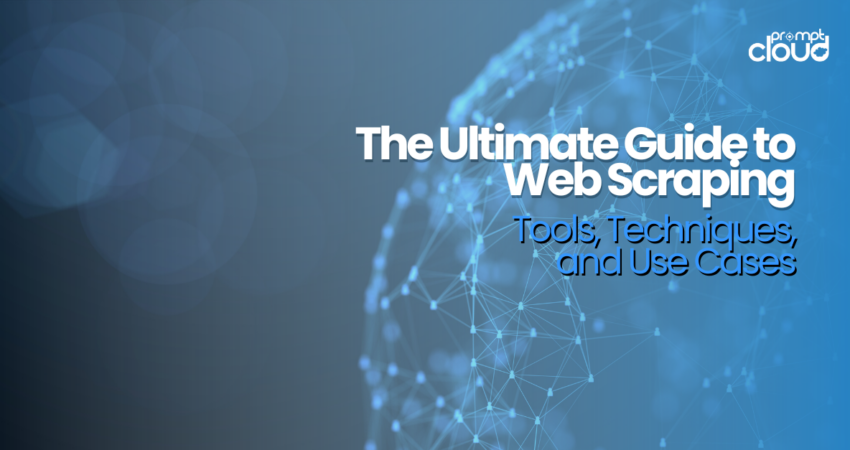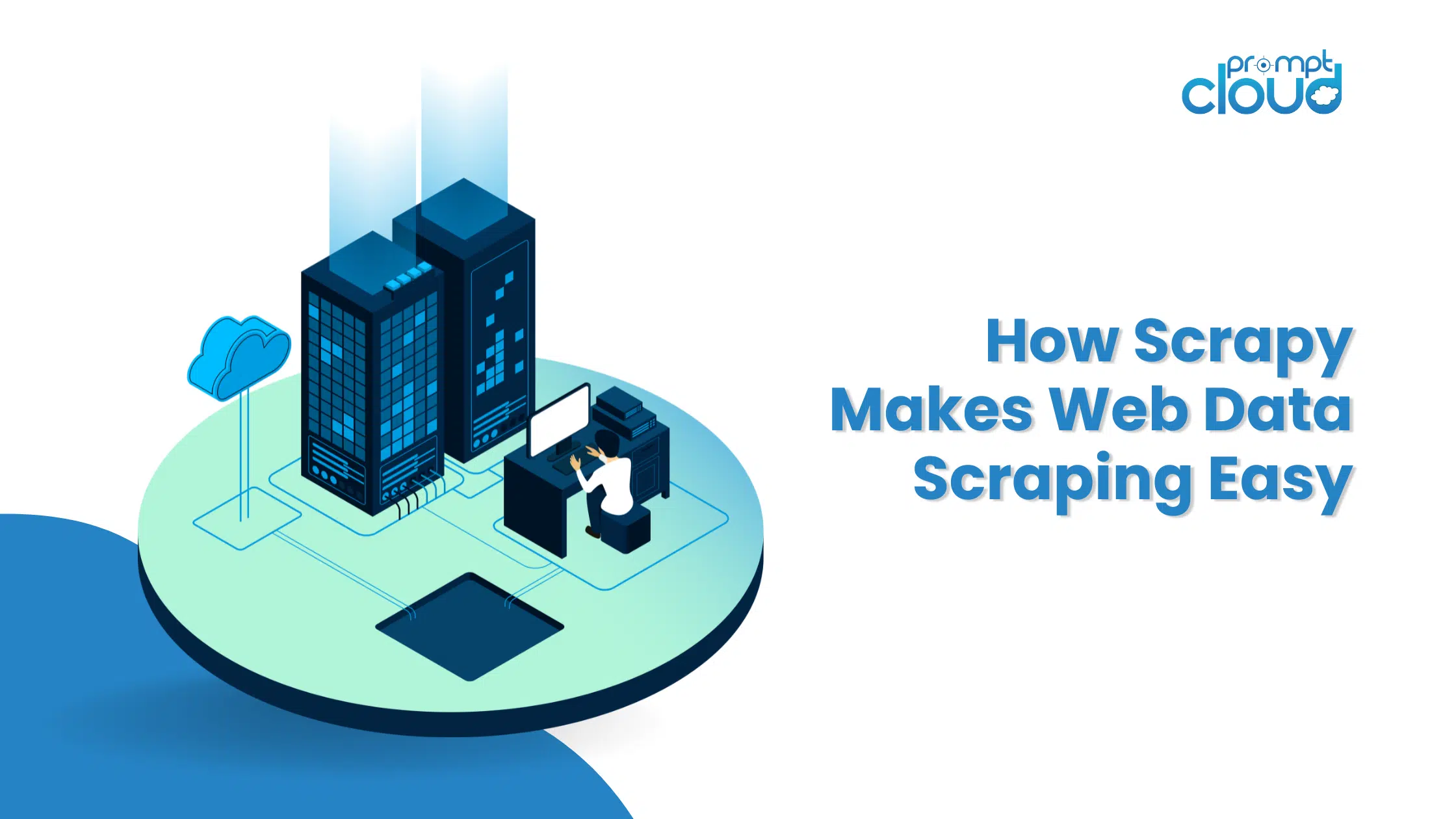
In the digital era, data has become the new currency. Businesses, researchers, and developers turn to web scraping to gather the valuable data they need from the vast expanses of the internet. This comprehensive guide delves into the world of web scraping, exploring its tools, techniques, and varied use cases.
What is Web Scraping?
Web scraping, also known as web data extraction, is the process of retrieving data from websites. This technique involves programmatically visiting web pages and extracting useful information, typically transforming unstructured web data into a structured format suitable for analysis and integration into databases or applications.
Web Scraping Tools
- Automated Web Scraping Software: Tools like Octoparse and ParseHub offer a user-friendly interface for non-technical users to extract web data.
- Programming Libraries: Python libraries such as BeautifulSoup and Scrapy are popular among developers for custom web scraping tasks.
- Cloud-Based Web Scraping Services: Platforms like PromptCloud provide end-to-end managed web scraping services, ideal for large-scale and complex data extraction needs.
Web Scraping Techniques
Web scraping involves a variety of techniques, each tailored to navigate and extract data from different types of web environments. These techniques are crucial in overcoming the challenges posed by the diverse nature of web pages. Here are some key web scraping techniques:
HTML Parsing
- Description: This is the most fundamental technique, where scrapers parse HTML code to extract data. Tools like BeautifulSoup in Python are used to navigate the structure of HTML and extract relevant information.
- Use Case: Ideal for scraping static websites where data is embedded directly in the HTML.
AJAX and JavaScript Rendering
- Description: Many modern websites load their content dynamically using AJAX and JavaScript. Scraping these sites requires tools that can execute JavaScript and retrieve data loaded asynchronously.
- Use Case: Useful for extracting data from web applications and sites that rely heavily on JavaScript for content rendering.
Handling Pagination and Infinite Scroll
- Description: Techniques to navigate through multiple pages of content, either by following pagination links or handling infinite scroll functionalities.
- Use Case: Essential for e-commerce sites, online directories, or any site where content spans across several pages.
Captcha Solving and Proxy Rotation
- Description: Advanced techniques involving the use of proxy servers to mask scraping activities and algorithms to solve CAPTCHAs, allowing the scraper to mimic human browsing behavior and avoid detection.
- Use Case: Necessary for scraping websites with strict anti-bot measures.
Headless Browsers
- Description: Tools like Selenium or Puppeteer use headless browsers to interact with web pages programmatically, simulating human browsing patterns, including clicking and scrolling.
- Use Case: Ideal for complex scraping tasks where direct HTML parsing is insufficient, especially in websites requiring user interaction.
API Extraction
- Description: Extracting data by making requests to public or private APIs, often returning data in a structured format like JSON or XML.
- Use Case: Effective for social media platforms, mobile applications, or any service offering a data API.
Regular Expressions (Regex)
- Description: Using pattern matching to extract specific text or data points from a larger text corpus.
- Use Case: Useful for extracting specific information like phone numbers, email addresses, or any standardized data format.
Each of these techniques addresses specific challenges in web scraping, ranging from basic data extraction to navigating complex dynamic sites and evading anti-scraping technologies. The choice of technique largely depends on the structure and complexity of the target website.
Python Web Scraping
Python is a popular language for web scraping due to its simplicity and the powerful libraries available for this purpose. Here’s a brief overview of how Python can be used for web scraping:
Key Libraries for Web Scraping in Python
BeautifulSoup:
- Used for parsing HTML and XML documents.
- Ideal for extracting data from static websites.
- Works well with Python’s built-in requests library to fetch web page content.
Scrapy:
- An open-source and collaborative web crawling framework.
- Allows you to write rules to extract the data from web pages.
- Can handle more complex and large-scale web scraping tasks.
Selenium:
- Primarily used for automating web applications for testing purposes.
- Can be used for scraping dynamic content that requires interaction, like clicking buttons or filling forms.
- Utilizes a real web browser, enabling it to execute JavaScript just like a regular browser.
Basic Web Scraping Process Using Python
Fetching Web Page Content:
- Use the requests library to make HTTP requests to the web server and fetch the content of a web page.
Parsing the Content:
- Utilize BeautifulSoup or lxml to parse the fetched HTML content.
- Extract relevant information by locating HTML elements using selectors like tags, IDs, and classes.
Handling Dynamic Content:
- For dynamic websites, use Selenium to automate browser interactions to fetch dynamically loaded content.
Data Extraction and Storage:
- Extract the required data from the parsed HTML.
- Store the data in a structured format like CSV, JSON, or a database.
Handling Exceptions and Bots:
- Implement error handling to manage request failures or invalid responses.
- Use headers, proxies, and delays to mimic human behavior and avoid getting blocked by anti-scraping mechanisms.
Example of a Simple Web Scraping Script in Python
import requests
from bs4 import BeautifulSoup
# Fetch web page content
url = “http://example.com”
response = requests.get(url)
# Parse the HTML content
soup = BeautifulSoup(response.text, ‘html.parser’)
# Extract data
data = soup.find_all(‘tag_name’, {‘class’: ‘class_name’})
# Print extracted data
for item in data:
print(item.text)
Use Cases of Web Scraping
- Market Research: Companies scrape competitor websites for product pricing, reviews, and market trends.
- Lead Generation: Scraping contact information from various online sources to build potential customer databases.
- Real Estate Listings: Aggregating property data from multiple real estate websites for analysis and comparison.
- Sentiment Analysis: Extracting user opinions and reviews for brand monitoring and reputation management.
How PromptCloud Can Help
As a specialized web scraping service provider, PromptCloud caters to businesses requiring reliable, high-quality, and custom data extraction solutions. Our expertise spans across various industries, ensuring compliance, scalability, and tailor-made data feeds suited to specific business requirements.
Conclusion
Web scraping opens up a world of possibilities for data-driven decision making. Whether it’s a small project or an enterprise-level endeavor, understanding the right tools, techniques, and applications of web scraping is crucial for success in the modern data landscape.
Frequently Asked Question
Is it legal to scrape the web?
The legality of web scraping depends on several factors and can vary by country and website. Here are some important considerations:
- Terms of Service: Many websites specify their stance on web scraping in their Terms of Service (ToS). Scraping data from a site in a way that violates its ToS could potentially lead to legal challenges.
- Copyright Laws: If the data being scraped is copyrighted, using it without permission may infringe on the copyright holder’s rights.
- Data Privacy Laws: Laws like the GDPR in Europe impose strict rules on how personal data can be collected and used. Scraping personal data without consent could be a legal violation.
- Accessing Protected Areas: Scraping data from password-protected areas or using means to bypass any form of website security can be illegal.
- Frequency and Volume of Scraping: Overwhelming a website’s server by sending too many requests in a short period can be considered a denial-of-service attack, which is illegal.
While web scraping is not inherently illegal, it becomes a legal issue if it violates specific website policies, privacy laws, or copyright rules. It’s crucial to be aware of and comply with legal and ethical guidelines when performing web scraping.
Do all websites allow web scraping?
No, not all websites allow web scraping. The permission to scrape a website depends on several factors, including the website’s terms of service (ToS), robots.txt file, and applicable laws.
- Terms of Service: Many websites explicitly state in their ToS whether they allow web scraping or not. Violating these terms can potentially lead to legal actions against the scraper.
- robots.txt File: Websites often use a robots.txt file to specify the rules for web crawlers and scrapers. This file may restrict access to certain parts of the site or prohibit scraping altogether.
- Legal Restrictions: Some jurisdictions have laws that may impact the legality of web scraping, particularly concerning data privacy and copyright.
It’s important for anyone engaging in web scraping to review these aspects and ensure that their activities are compliant with the website’s policies and legal requirements. In many cases, websites may require specific consent or offer an API as a legal way to access their data.
What is the easiest way to scrape a website?
The easiest way to scrape a website typically involves using user-friendly tools and libraries that handle most of the complexities of web scraping. Here’s a straightforward approach:
Use a Web Scraping Tool or Software:
- Tools like Octoparse, ParseHub, or WebHarvy are designed for non-programmers. They offer a point-and-click interface to select the data you want to scrape, and they handle the underlying code.
- These tools often include features to deal with dynamic content loaded by JavaScript and can navigate through pagination or dropdowns.
Use Python Libraries (for Basic Programming Experience):
- If you have some programming experience, Python libraries like BeautifulSoup or Scrapy are great options. They require more involvement than point-and-click tools but offer greater flexibility.
- BeautifulSoup is particularly user-friendly for beginners. Combined with Python’s requests library, it allows you to fetch a webpage and parse its HTML with just a few lines of code.
Browser Extensions:
- Browser extensions like Web Scraper (available on Chrome) or Data Miner can be used for simple scraping tasks directly from the web browser, without the need for a separate software setup.
Follow Legal and Ethical Guidelines:
- Ensure that your scraping activities are compliant with the website’s terms of service and privacy policies. Avoid scraping personal or sensitive data without permission.
- Respect the website’s robots.txt file, which provides guidelines on what is allowed to be scraped.
Store and Use the Data:
- Most tools allow you to export the scraped data in formats like CSV, Excel, or JSON. Ensure you have a clear plan for how you’ll store and use this data.




















